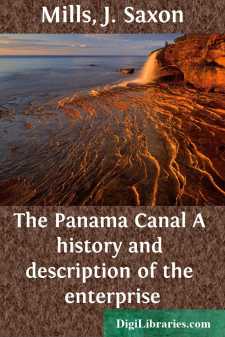Categories
- Antiques & Collectibles 13
- Architecture 36
- Art 48
- Bibles 22
- Biography & Autobiography 813
- Body, Mind & Spirit 142
- Business & Economics 28
- Children's Books 16
- Children's Fiction 13
- Computers 4
- Cooking 94
- Crafts & Hobbies 4
- Drama 346
- Education 46
- Family & Relationships 57
- Fiction 11829
- Games 19
- Gardening 17
- Health & Fitness 34
- History 1377
- House & Home 1
- Humor 147
- Juvenile Fiction 1873
- Juvenile Nonfiction 202
- Language Arts & Disciplines 88
- Law 16
- Literary Collections 686
- Literary Criticism 179
- Mathematics 13
- Medical 41
- Music 40
- Nature 179
- Non-Classifiable 1768
- Performing Arts 7
- Periodicals 1453
- Philosophy 64
- Photography 2
- Poetry 896
- Political Science 203
- Psychology 42
- Reference 154
- Religion 513
- Science 126
- Self-Help 84
- Social Science 81
- Sports & Recreation 34
- Study Aids 3
- Technology & Engineering 59
- Transportation 23
- Travel 463
- True Crime 29
The Panama Canal A history and description of the enterprise
by: J. Saxon Mills
Description:
Excerpt
CHAPTER I.
It was either very careless or very astute of Nature to leave the entire length of the American continent without a central passage from ocean to ocean, or, having provided such a passage at Nicaragua, to allow it to be obstructed again by volcanic action. This imperviousness of the long American barrier had, as we shall see, important economic and political results, and the eventual opening of a waterway will have results scarcely less important. The Panama Canal will achieve, after more than four centuries, the object with which Columbus spread his sails westwards from the port of Palos—the provision of a sea-route westwards to China and the Indies. The capture of Constantinople in 1453 by the Turks interrupted the ancient trade routes between East and West. Brigands held up the caravans which plodded across the desert sands from the Euphrates and the Indus, and pirates swarmed in the Mediterranean and Red Sea, intercepting the precious cargoes of silks and jewels and spices consigned to the merchants of Italy. The eyes of all Europe were turned to the Atlantic, and an ocean route westwards to India and the Orient, the existence of which had been fabled from the days of Aristotle, became an economic necessity.
Columbus, as every one knows, died in the belief that he had discovered this route, and that the lands he had visited were fringes and islands of the Eastern Asiatic continent. The geographers of those days greatly exaggerated the eastern extension of Asia, with the result that the distance from Europe to China and India was underestimated by at least one-half. This was a fortunate mistake, for it is improbable that if Columbus had known that Cathay and Cipangu (Japan) were a good 12,000 miles westwards from the coast of Spain he would have ventured upon a continuous voyage of that length in the vessels of his time.
It was in his fourth voyage (1502) that Columbus first reached and explored the coastline of the isthmus and Central America. He was apparently not the first to land on the isthmus. That distinction belongs either to Alfonso Ojeda, who is said to have reached "Terra Firma" earlier in 1502, or to Rodrigo de Bastidas, who, we are told, set sail from Cadiz with La Cosa in 1500, and, reached the isthmus somewhere near Porto Bello. About the doings of Columbus on the mainland we get some detailed information from the Portuguese historian and explorer of the sixteenth century, Galvano. It is interesting to read that the great navigator visited the exact spot where the newly-constructed canal starts from the Caribbean coast. From the Rio Grande, we read, Columbus "went to the River of Crocodiles which is now called Rio de Chagres, which hath its springs near the South Sea, within four leagues of Panama, and runneth into the North Sea." It was this same river, as we shall see, that became the feeder of the canal when the high-level scheme was adopted. So far out of his reckoning was Columbus that at Panama he imagined himself to be ten days' journey from the mouth of the Ganges!...


